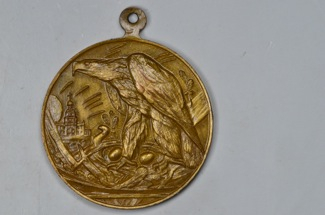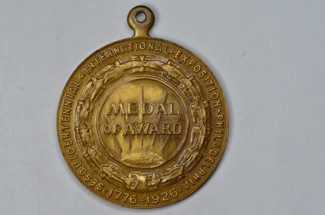Here are Four High Grade Bryan Dollars (So-Called Dollars) from the Zerbe-Ostheimer-Perkins Collection.
....
H&K 778, S-2, Z-2 Tiffany & Co. "STERLING" in small letters on lower edge graded NGC MS66. This is a Uniface strike, thus no reverse photo is included. It is the only specimen (with STERLING on the edge) graded by NGC and may be Unique. NGC made a special holder for this with the lower edge visible through a cut they made in the holder (STERLING is visible through the holder).
.....
....
H&K 782, S-10, Z-8 in NGC MS66.
...
...
....
H&K 783, S-12, Z-10 Gorham Mfg. Co. in NGC MS66.
....
....
H&K 786, S17, Z-15 Spaulding & Co. in NGC MS66. Uniface strike.
....
... Photos courtesy of W. David Perkins.
@WDP said: ... from their large So-Called Dollar collection of over 700 different H&K Numbers, one of the largest collections ever formed.
@jonathanb replied: FWIW, there are about 1,400 different HK numbers, so a collection of 700 different would be only about half the total. That's impressive, but I can't imagine it would be a record holder.
There are over 900 varieties that are R-6 and lower, giving a lot of margin even if you don't try for the rarities at all.
I figure that the largest So-Called Dollar collections would have had to have about 1,100 different varieties. There are about 100 R-9 and R-10 listings, and another 200 R-8. All the rest should be obtainable to someone with patience (and some money to spend). Even the R-8s and R-9s show up from time to time.
@jonathanb, thanks for your reply and thoughts on this subject.
The Ostheimers started collecting the So-Called Dollars in the late 1950s / early 1960s, before the H&K book was written and published. The first edition of the H&K book was published in 1963.
The first edition of the book had H&K numbers 1-917 in the "regular section" and numbers 1000 to 1033, thus there were less than 1000 H&K numbers in the first edition and at the time they collected.
The Ostheimer's collecting goal was not to have all of the H&K numbers, but they had approximately 75% of the H&K numbers at the time they stopped collecting. Tony Swicer had 900 or so (I have the number in a file but can't locate it at this time). These are the two largest collections I knew of at the time that I was active researching the SCDs and their rarity around 2004-2007. I personally haven't heard of a larger collection, then or now. That of course doesn't mean that there isn't one or more larger out there, past or present.
In my experience there are some very tough R-6, R-7, and R-8 die marriages for So-Called Dollars. Some of the rarity ratings in the second edition of the book were based on the number struck, not the number of surviving examples. There are 89 plate coins in the second edition of the So-Called Dollar book - these plate photos were given to the four authors of the revised edition (second edition) of the book only a few months before publication - many of these plate coins were also plate coins in the first edition. Not all or these plate coins have R-9 or R-10 rarity ratings. The relative rarity was confirmed by the prices realized relative to the pricing supplement in the second edition of the book when the rarities from the Ostheimer Collection were sold by specialist dealer Jeff Shevlin ("So-Called Guy") in a series of four sales. As a side note, many of these were the "only example graded" by NGC at the time.
I'd love to learn that someone today has 1,000 or more H&K numbers or is trying to "get them all." Let us know if you know of anyone doing this! Thanks.
@WDP said: @jonathanb, thanks for your reply and thoughts on this subject.
The Ostheimers started collecting the So-Called Dollars in the late 1950s / early 1960s, before the H&K book was written and published. The first edition of the H&K book was published in 1963.
The first edition of the book had H&K numbers 1-917 in the "regular section" and numbers 1000 to 1033, thus there were less than 1000 H&K numbers in the first edition and at the time they collected.
Don't forget all of the a's and b's. I count 46 (I think) of them from HK-11a to HK-865a in the first edition. So yes, under 1000, but not much under.
The "Current Valuations" pamphlet published by Johnson & Jensen in 1979 added another 40 or so composition variants that were well known at the time. Those were listed "in the right order", although the pamphlet didn't give them official numbers.
The Ostheimer's collecting goal was not to have all of the H&K numbers, but they had approximately 75% of the H&K numbers at the time they stopped collecting. Tony Swicer had 900 or so (I have the number in a file but can't locate it at this time). These are the two largest collections I knew of at the time that I was active researching the SCDs and their rarity around 2004-2007.
Those numbers seem plausible to me.
I personally haven't heard of a larger collection, then or now. That of course doesn't mean that there isn't one or more larger out there, past or present.
I'd love to learn that someone today has 1,000 or more H&K numbers or is trying to "get them all." Let us know if you know of anyone doing this! Thanks.
I'm "trying to get them all", in the sense that I'm keeping track of my progress. I have no hopes of actually getting there, of course, or anywhere close.
Still, I have over 700 different myself. That took some patience but not huge amount of money. And I'm missing a LOT of common common pieces that I've just never gotten around to getting. Given that I have over 700 different, I'd be shocked if there was noone out there who has 1000+.
FWIW I've asked Jeff Shevlin a few times, and he says that he never counted his collection. I'm not sure I believe him. :-)
For reference, there have been nearly 1000 different SCDs sold at major auctions just over the past 5 years, and nearly 1200 different in the past 10 years. Someone could build a collection pretty quickly if they put their mind to it.
In my experience there are some very tough R-6, R-7, and R-8 die marriages for So-Called Dollars. Some of the rarity ratings in the second edition of the book were based on the number struck, not the number of surviving examples. There are 89 plate coins in the second edition of the So-Called Dollar book - these plate photos were given to the four authors of the revised edition (second edition) of the book only a few months before publication - many of these plate coins were also plate coins in the first edition. Not all or these plate coins have R-9 or R-10 rarity ratings. The relative rarity was confirmed by the prices realized relative to the pricing supplement in the second edition of the book when the rarities from the Ostheimer Collection were sold by specialist dealer Jeff Shevlin ("So-Called Guy") in a series of four sales. As a side note, many of these were the "only example graded" by NGC at the time.
I did an exercise a year or two ago where I tried to recompute rarities for SCDs based on first principles. I lined up the number of examples listed in the NGC pop reports (about 25,000 total at the time) against my records for auction appearances (about 30,000 at the time). With that, I could make some interesting extrapolations.
For starters, if there were ten different HK numbers that each had 60-70 examples in the pop reports, and each had 60-70 examples my auction records, they had darn well better have similar rarity ratings also.
That gave me enough to produce a relative rarity raking that I was pretty happy with.
I also cross-referenced against cases where we knew the original mintage, For example, something with an original mintage of 1,000 couldn't possibly be an R-2 (2001-5000 known). It might conceivably be R-3 (501-2000 known). Mostly I assumed a decent attrition from the original mintage, and guessed that something with an original mintage of 1,000 was now an R-4 (201-500 known). Using the known mintages as guideposts, I could convert the relative rarity ranking to absolute rarity numbers.
Then I used my best judgement to deal with the outliers. Sorry, I had to do it. My data, my rules. :-)
Using that analysis, I disagreed with nearly half of the rarity values (43%) in the second edition. On the other hand, I was within +/- 1 rarity ranking (R-4 vs R-5, etc) for 92% of the listings.
There were 37 listings where I now think the published values were too low by at least two points (for example listed as R-6 but I think should be R-8), including three that are off by 3 points and one that is off by 4 points.
There were 69 listings where I now think the published values were too high by at least two points (for example listed as R-5 but I think should be R-3), including ten that are off by 3 points.
I think that the best summary is that we erred on the side of being too conservative when preparing the second edition. My new analysis shows declines in the total count of R-5, R-6, and R-7 listings, while R-1 through R-4 and R-8 through R-10 all showed net gains. The common pieces are more common than we realized -- and the truly rare pieces are more rare. This supports what @WDP says above.
Considering how much more we know now than 10 years ago when the second edition was prepared, I'm pretty happy with that.
The updated rarity values will be included if we ever published a third edition (or an update to the second edition, or whatever you want to call whatever happens next).
The sheer number and variety of So-Called Dollars makes them interesting. Now that PCGS is slabbing more So-Called Dollars, it would be great to have them in the Set Registry. They already have some sets for medals here so theoretically it should be easy for them to add:
here is HK-458 and what is either an unlisted Variety or something similar with a different obverse. can anyone show a picture or acknowledge the existence of other "Medal of Award examples??? I'm sure this isn't the only one but it's the only one I've seen.
HK-458 "Medal of Honor" as listed by Hibler-Kappen.
Comments
HK-858 Variety struck in Brass, Rarity-7 MS65 PL, Ex: Ostheimer Collection, Hibler Plate Coin:
A lot of awesome medals in this thread. Thanks for sharing everyone.
back at Cardinal with an aluminum version, HK-860.
@Weiss, Nice looking Slusher Dollar!
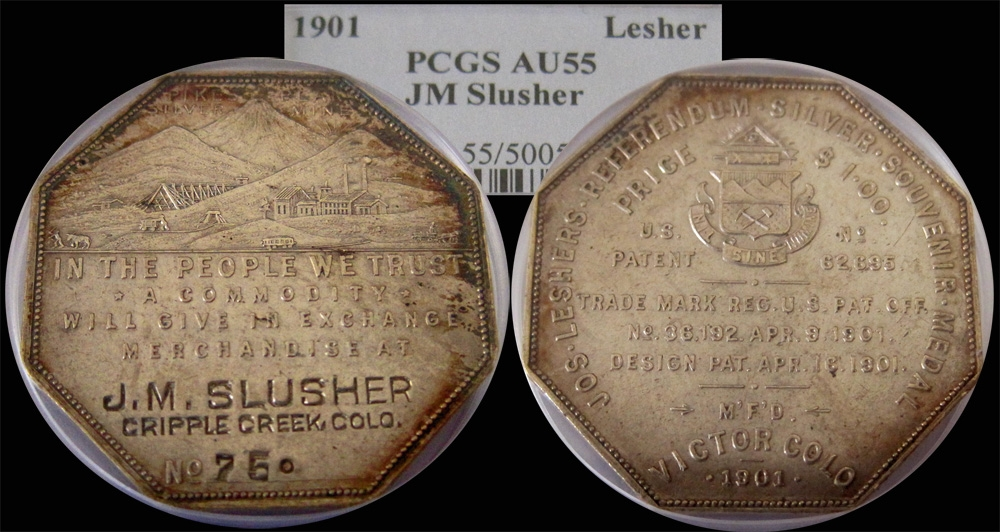
....
W. David Perkins Numismatics - http://www.davidperkinsrarecoins.com/ - 25+ Years ANA, ANS, NLG, NBS, LM JRCS, LSCC, EAC, TAMS, LM CWTS, CSNS, FUN
Here is the silver version HK- 859
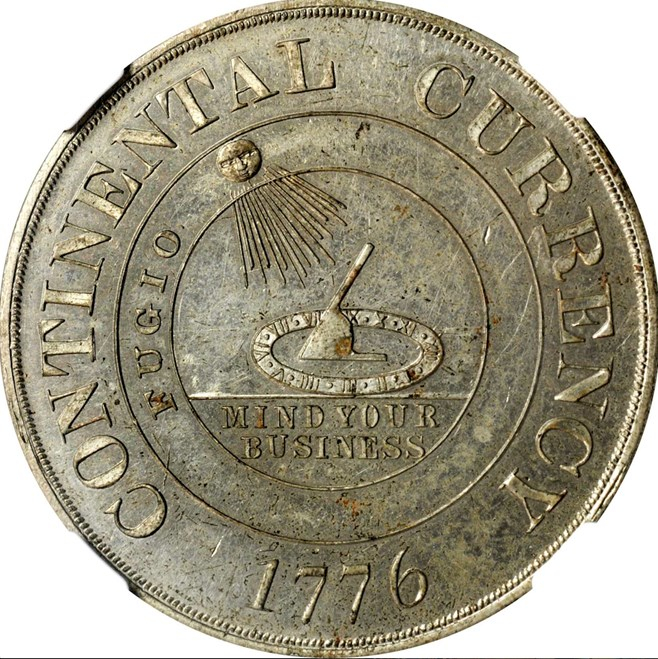
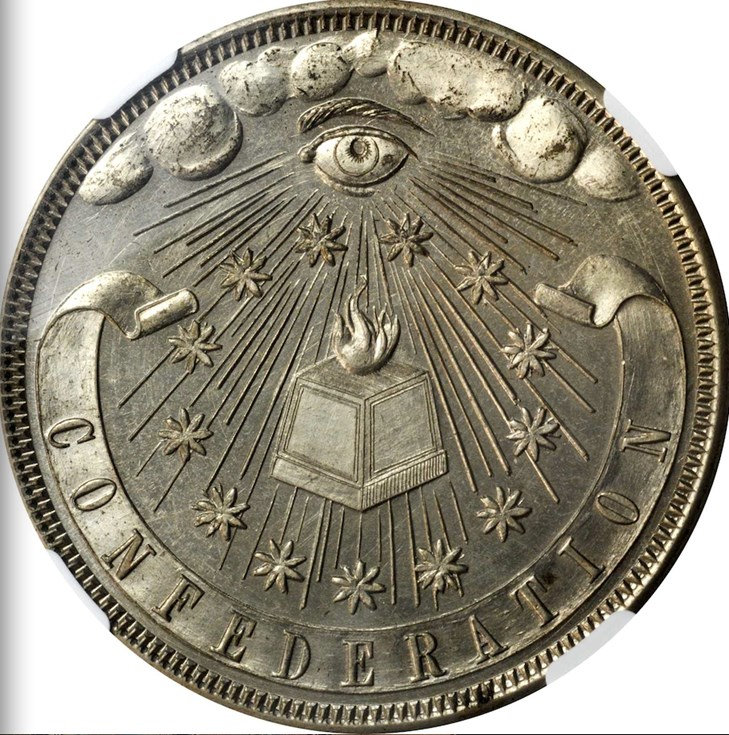
.
.
.
CoinsAreFun Toned Silver Eagle Proof Album
.
Gallery Mint Museum, Ron Landis& Joe Rust, The beginnings of the Golden Dollar
.
More CoinsAreFun Pictorials NGC FOR SALE
.
CoinsAreFun Toned Silver Eagle Proof Album
.
Gallery Mint Museum, Ron Landis& Joe Rust, The beginnings of the Golden Dollar
.
More CoinsAreFun Pictorials NGC FOR SALE
HK-859 is German Silver, not silver. There is no silver in German Silver.
That’s what I get for using my iPad .....typo.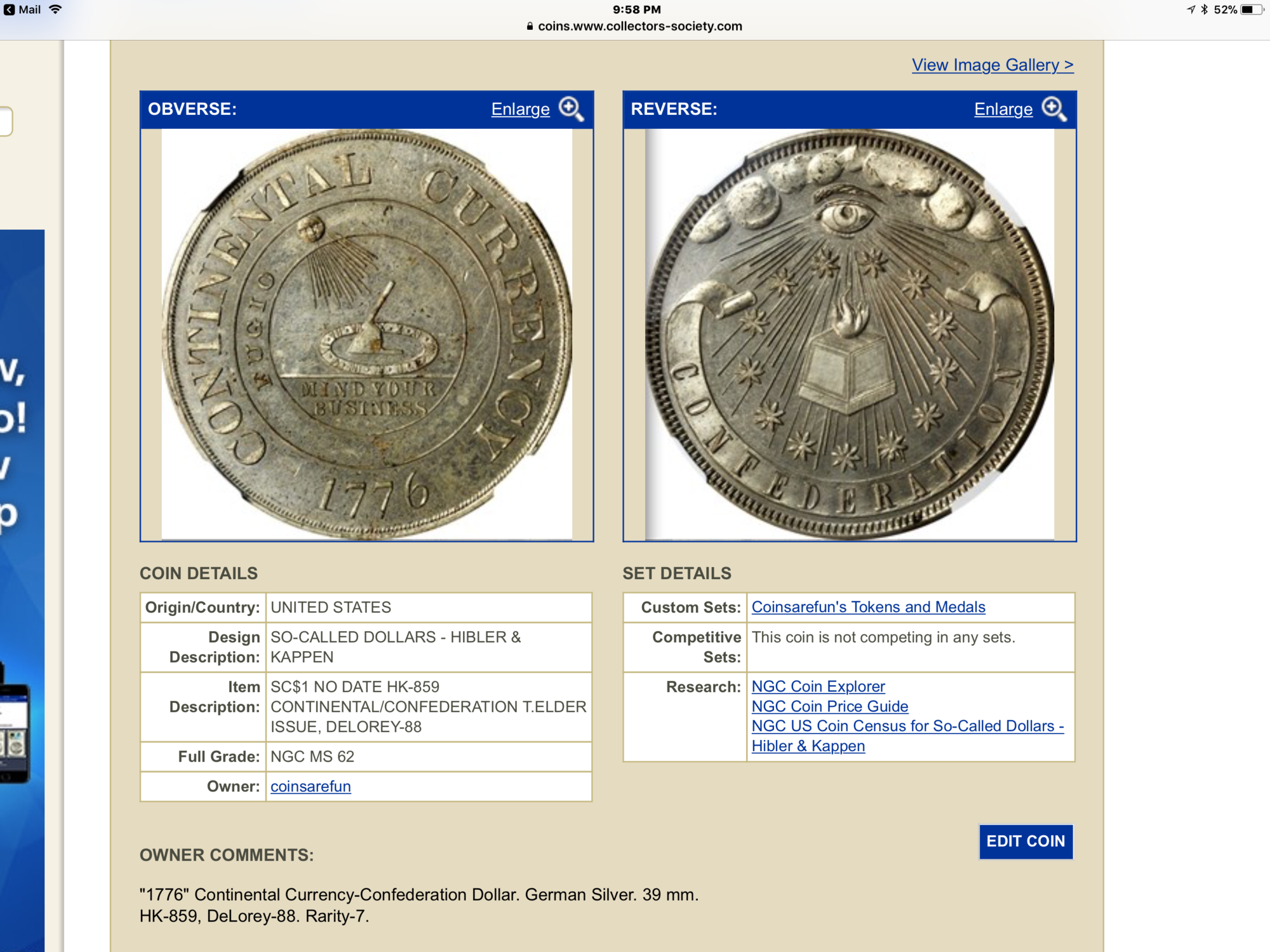
.
.
.
.
CoinsAreFun Toned Silver Eagle Proof Album
.
Gallery Mint Museum, Ron Landis& Joe Rust, The beginnings of the Golden Dollar
.
More CoinsAreFun Pictorials NGC FOR SALE
Stunning slugs there Stephanie.
I love your picture albums! You have a great eye for material!
Thank you very much for the kind words
.
CoinsAreFun Toned Silver Eagle Proof Album
.
Gallery Mint Museum, Ron Landis& Joe Rust, The beginnings of the Golden Dollar
.
More CoinsAreFun Pictorials NGC FOR SALE
Here are Four High Grade Bryan Dollars (So-Called Dollars) from the Zerbe-Ostheimer-Perkins Collection.
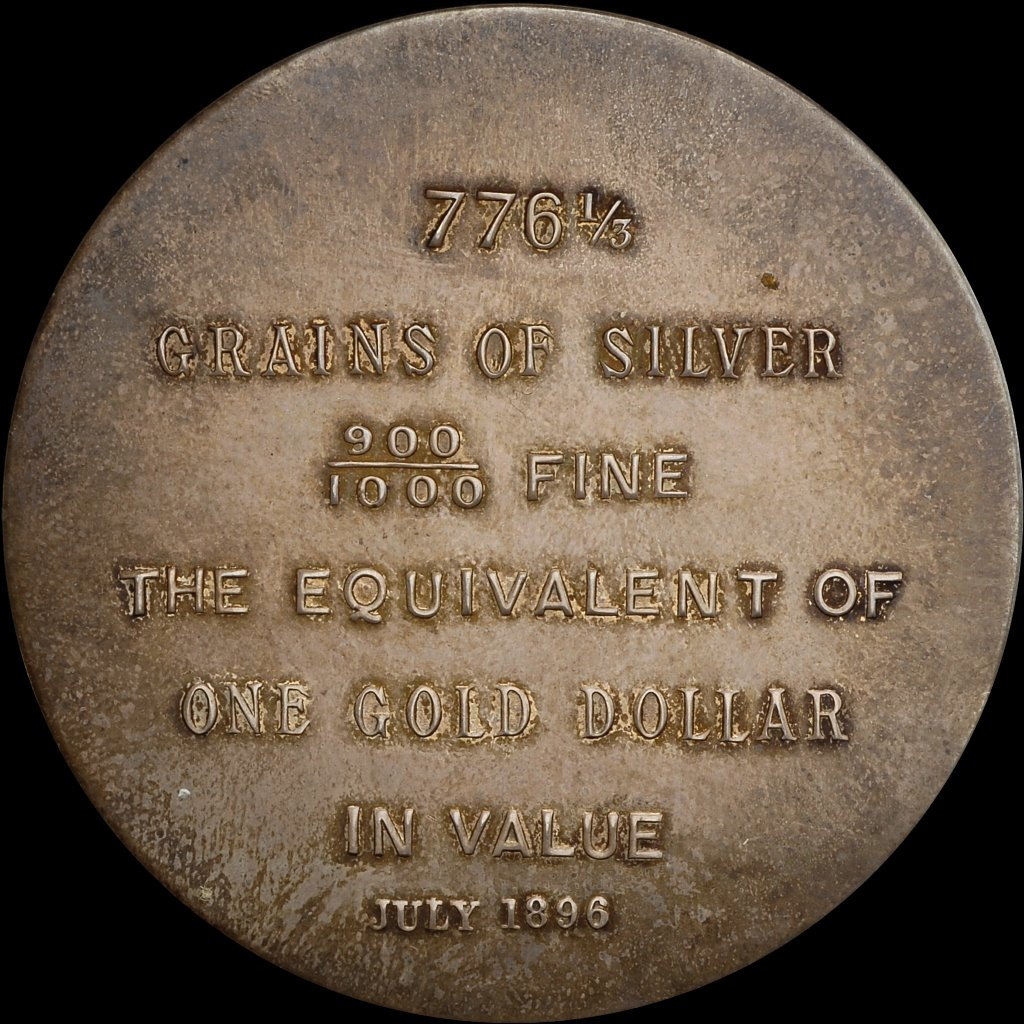
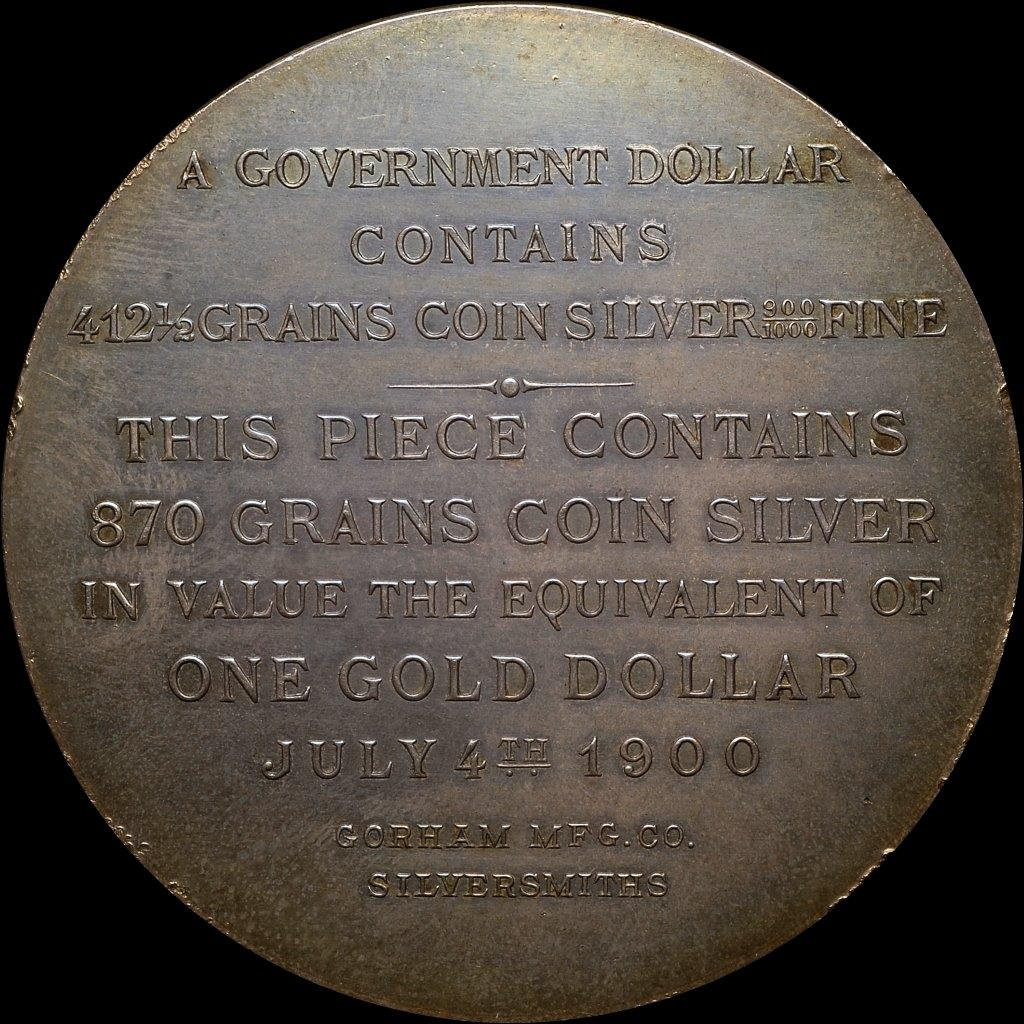
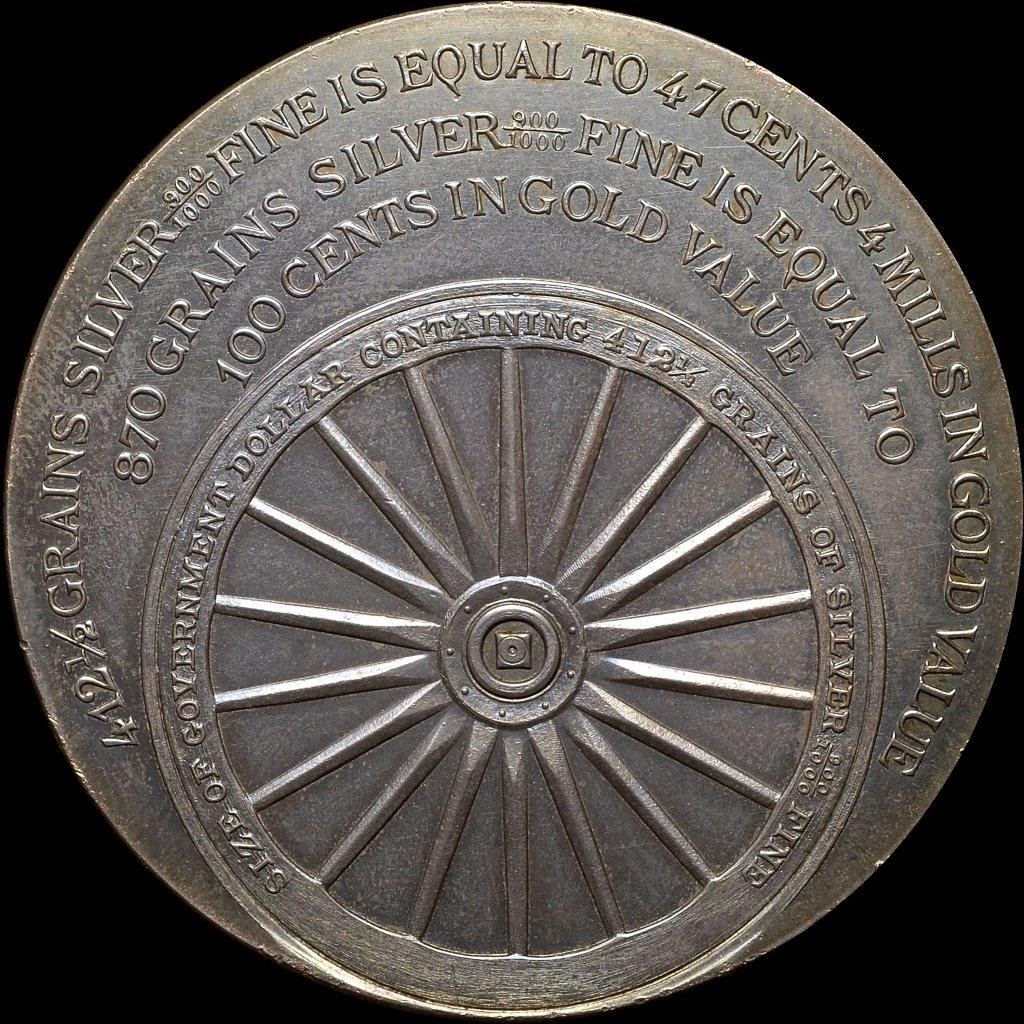
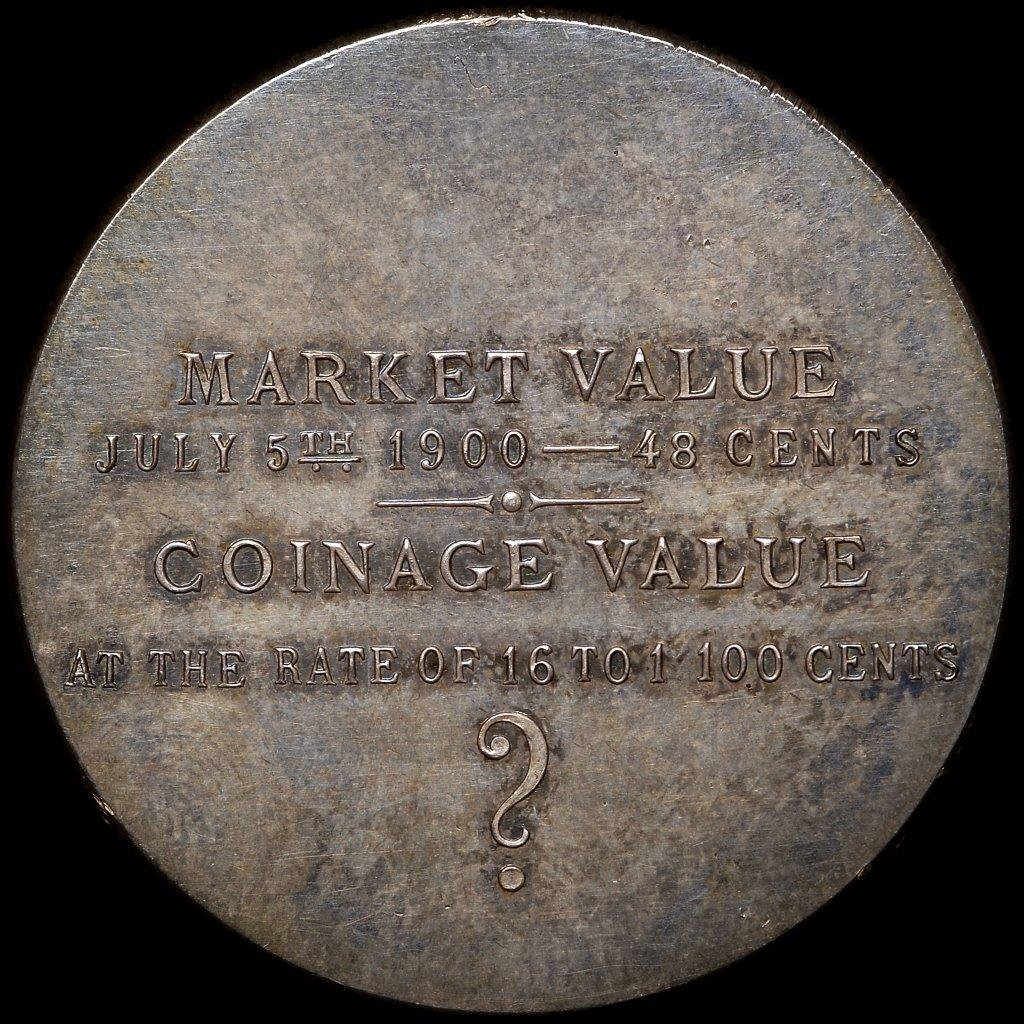
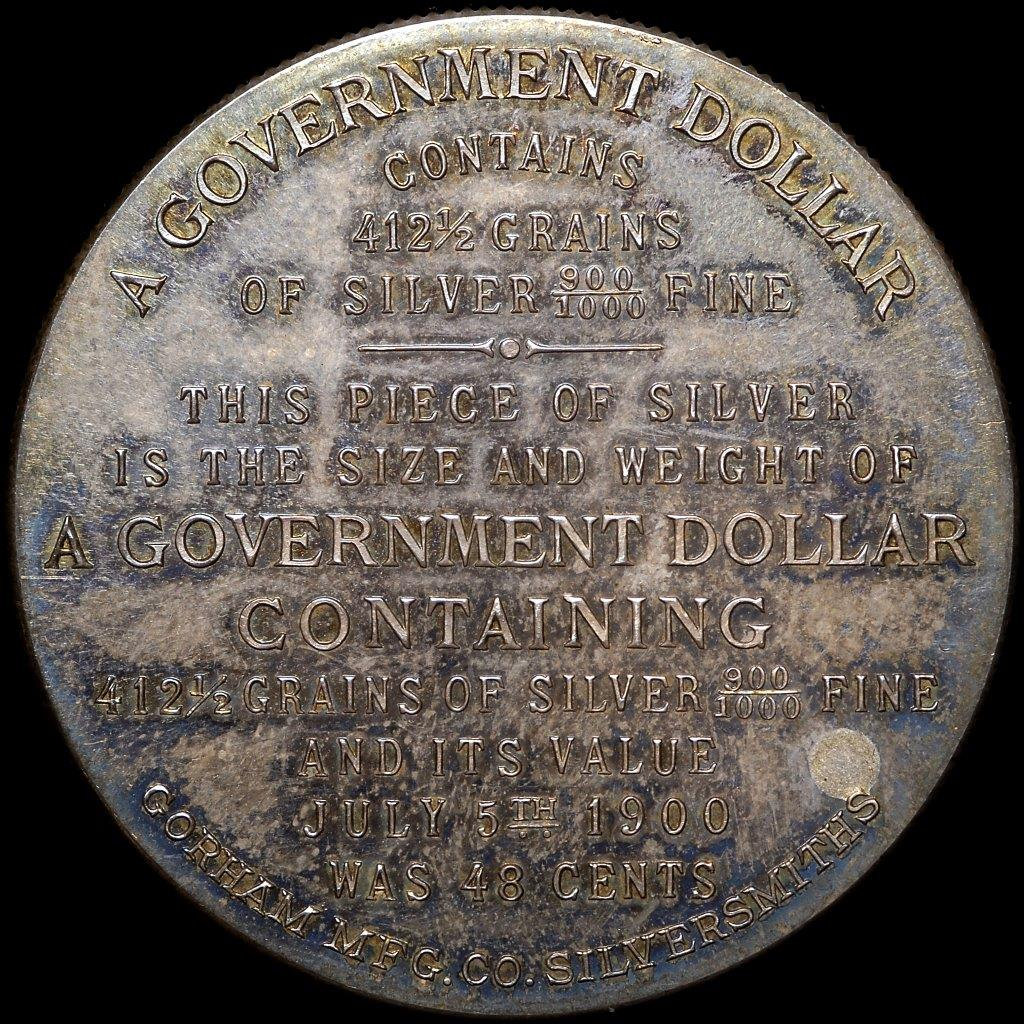
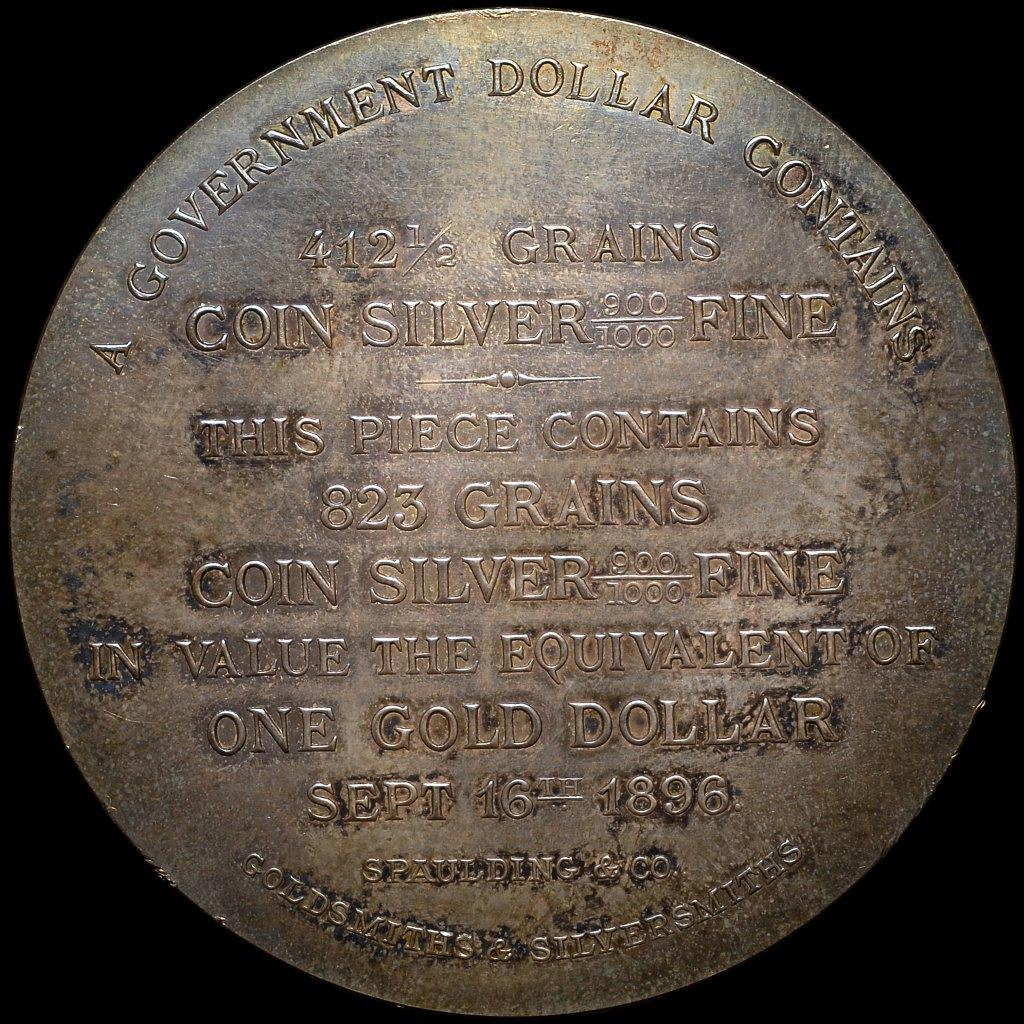
....
H&K 778, S-2, Z-2 Tiffany & Co. "STERLING" in small letters on lower edge graded NGC MS66. This is a Uniface strike, thus no reverse photo is included. It is the only specimen (with STERLING on the edge) graded by NGC and may be Unique. NGC made a special holder for this with the lower edge visible through a cut they made in the holder (STERLING is visible through the holder).
.....
....
H&K 782, S-10, Z-8 in NGC MS66.
...
...
....
H&K 783, S-12, Z-10 Gorham Mfg. Co. in NGC MS66.
....
....
H&K 786, S17, Z-15 Spaulding & Co. in NGC MS66. Uniface strike.
....
...
Photos courtesy of W. David Perkins.
W. David Perkins Numismatics - http://www.davidperkinsrarecoins.com/ - 25+ Years ANA, ANS, NLG, NBS, LM JRCS, LSCC, EAC, TAMS, LM CWTS, CSNS, FUN
@WDP said: ... from their large So-Called Dollar collection of over 700 different H&K Numbers, one of the largest collections ever formed.
@jonathanb replied: FWIW, there are about 1,400 different HK numbers, so a collection of 700 different would be only about half the total. That's impressive, but I can't imagine it would be a record holder.
There are over 900 varieties that are R-6 and lower, giving a lot of margin even if you don't try for the rarities at all.
I figure that the largest So-Called Dollar collections would have had to have about 1,100 different varieties. There are about 100 R-9 and R-10 listings, and another 200 R-8. All the rest should be obtainable to someone with patience (and some money to spend). Even the R-8s and R-9s show up from time to time.
@jonathanb, thanks for your reply and thoughts on this subject.
The Ostheimers started collecting the So-Called Dollars in the late 1950s / early 1960s, before the H&K book was written and published. The first edition of the H&K book was published in 1963.
The first edition of the book had H&K numbers 1-917 in the "regular section" and numbers 1000 to 1033, thus there were less than 1000 H&K numbers in the first edition and at the time they collected.
The Ostheimer's collecting goal was not to have all of the H&K numbers, but they had approximately 75% of the H&K numbers at the time they stopped collecting. Tony Swicer had 900 or so (I have the number in a file but can't locate it at this time). These are the two largest collections I knew of at the time that I was active researching the SCDs and their rarity around 2004-2007. I personally haven't heard of a larger collection, then or now. That of course doesn't mean that there isn't one or more larger out there, past or present.
In my experience there are some very tough R-6, R-7, and R-8 die marriages for So-Called Dollars. Some of the rarity ratings in the second edition of the book were based on the number struck, not the number of surviving examples. There are 89 plate coins in the second edition of the So-Called Dollar book - these plate photos were given to the four authors of the revised edition (second edition) of the book only a few months before publication - many of these plate coins were also plate coins in the first edition. Not all or these plate coins have R-9 or R-10 rarity ratings. The relative rarity was confirmed by the prices realized relative to the pricing supplement in the second edition of the book when the rarities from the Ostheimer Collection were sold by specialist dealer Jeff Shevlin ("So-Called Guy") in a series of four sales. As a side note, many of these were the "only example graded" by NGC at the time.
I'd love to learn that someone today has 1,000 or more H&K numbers or is trying to "get them all." Let us know if you know of anyone doing this! Thanks.
W. David Perkins Numismatics - http://www.davidperkinsrarecoins.com/ - 25+ Years ANA, ANS, NLG, NBS, LM JRCS, LSCC, EAC, TAMS, LM CWTS, CSNS, FUN
Don't forget all of the a's and b's. I count 46 (I think) of them from HK-11a to HK-865a in the first edition. So yes, under 1000, but not much under.
The "Current Valuations" pamphlet published by Johnson & Jensen in 1979 added another 40 or so composition variants that were well known at the time. Those were listed "in the right order", although the pamphlet didn't give them official numbers.
Those numbers seem plausible to me.
I'm "trying to get them all", in the sense that I'm keeping track of my progress. I have no hopes of actually getting there, of course, or anywhere close.
Still, I have over 700 different myself. That took some patience but not huge amount of money. And I'm missing a LOT of common common pieces that I've just never gotten around to getting. Given that I have over 700 different, I'd be shocked if there was noone out there who has 1000+.
FWIW I've asked Jeff Shevlin a few times, and he says that he never counted his collection. I'm not sure I believe him. :-)
For reference, there have been nearly 1000 different SCDs sold at major auctions just over the past 5 years, and nearly 1200 different in the past 10 years. Someone could build a collection pretty quickly if they put their mind to it.
I did an exercise a year or two ago where I tried to recompute rarities for SCDs based on first principles. I lined up the number of examples listed in the NGC pop reports (about 25,000 total at the time) against my records for auction appearances (about 30,000 at the time). With that, I could make some interesting extrapolations.
For starters, if there were ten different HK numbers that each had 60-70 examples in the pop reports, and each had 60-70 examples my auction records, they had darn well better have similar rarity ratings also.
That gave me enough to produce a relative rarity raking that I was pretty happy with.
I also cross-referenced against cases where we knew the original mintage, For example, something with an original mintage of 1,000 couldn't possibly be an R-2 (2001-5000 known). It might conceivably be R-3 (501-2000 known). Mostly I assumed a decent attrition from the original mintage, and guessed that something with an original mintage of 1,000 was now an R-4 (201-500 known). Using the known mintages as guideposts, I could convert the relative rarity ranking to absolute rarity numbers.
Then I used my best judgement to deal with the outliers. Sorry, I had to do it. My data, my rules. :-)
Using that analysis, I disagreed with nearly half of the rarity values (43%) in the second edition. On the other hand, I was within +/- 1 rarity ranking (R-4 vs R-5, etc) for 92% of the listings.
There were 37 listings where I now think the published values were too low by at least two points (for example listed as R-6 but I think should be R-8), including three that are off by 3 points and one that is off by 4 points.
There were 69 listings where I now think the published values were too high by at least two points (for example listed as R-5 but I think should be R-3), including ten that are off by 3 points.
I think that the best summary is that we erred on the side of being too conservative when preparing the second edition. My new analysis shows declines in the total count of R-5, R-6, and R-7 listings, while R-1 through R-4 and R-8 through R-10 all showed net gains. The common pieces are more common than we realized -- and the truly rare pieces are more rare. This supports what @WDP says above.
Considering how much more we know now than 10 years ago when the second edition was prepared, I'm pretty happy with that.
The updated rarity values will be included if we ever published a third edition (or an update to the second edition, or whatever you want to call whatever happens next).
The sheer number and variety of So-Called Dollars makes them interesting. Now that PCGS is slabbing more So-Called Dollars, it would be great to have them in the Set Registry. They already have some sets for medals here so theoretically it should be easy for them to add:
https://www.pcgs.com/SetRegistry/u-s-coins/medals/149
Lafayette Grading Set
Lafayette Grading Set
Anything @keets has is my favorite.
Best place to buy !
Bronze Associate member
thatnks for the kind words, Kat.
here is HK-458 and what is either an unlisted Variety or something similar with a different obverse. can anyone show a picture or acknowledge the existence of other "Medal of Award examples??? I'm sure this isn't the only one but it's the only one I've seen.
HK-458 "Medal of Honor" as listed by Hibler-Kappen.
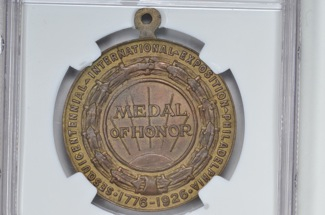
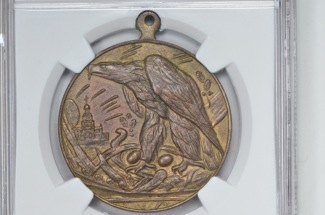
"Medal of Award" unlisted by Hibler-Kappen.
